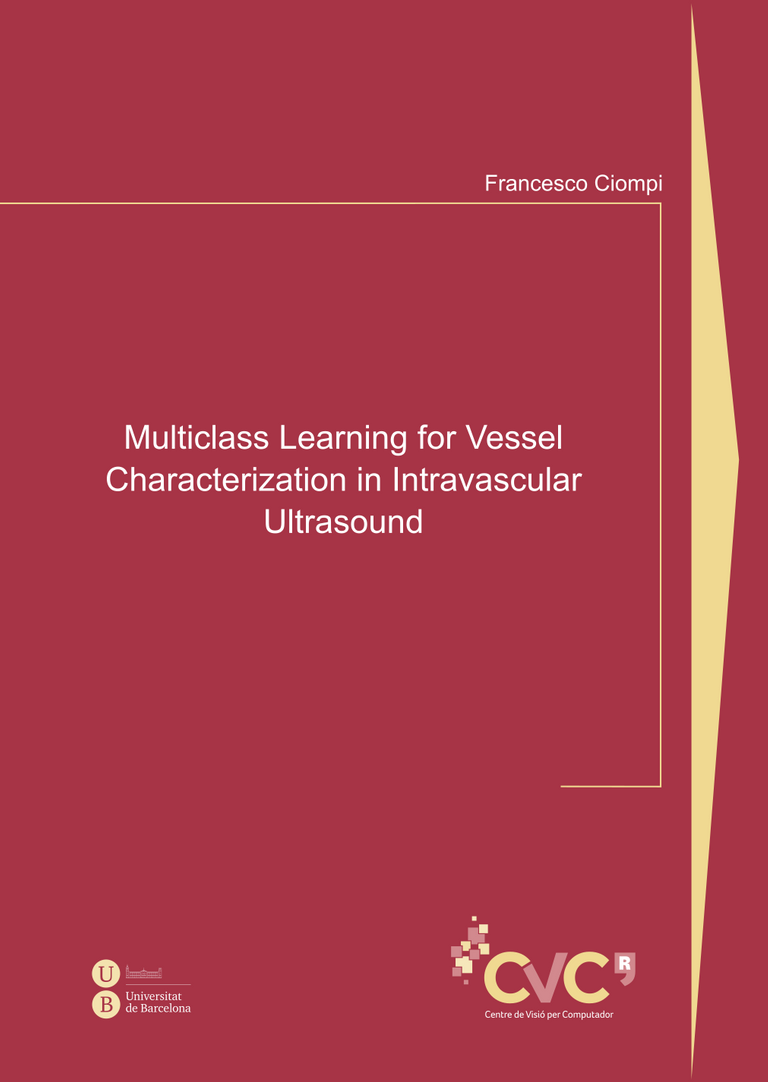Multi-Class Learning for Vessel Characterization in Intravascular Ultrasound
F. Ciompi
- Graduation year: 2012
- University of Barcelona, Spain
Abstract
In this thesis we tackle the problem of automatic characterization of human coronary vessel in Intravascular Ultrasound (IVUS) image modality. The basis for the whole characterization process is machine learning applied to multiclass problems. In all the presented approaches, the Error-Correcting Output Codes (ECOC) framework is used as central element for the design of multi-class classi ers. Two main topics are tackled in this thesis. First, the automatic detection of the vessel borders is presented. For this purpose, a novel context-aware classi er for multi-class classi cation of the vessel morphology is presented, namely ECOCDRF. Based on ECOC-DRF, the lumen border and the media-adventitia border in IVUS are robustly detected by means of a novel holistic approach, achieving an error comparable with inter-observer variability and with state of the art methods. The two vessel borders de ne the atheroma area of the vessel. In this area, tissue characterization is required. For this purpose, we present a framework for automatic plaque characterization by processing both texture in IVUS images and spectral information in raw Radio Frequency data. Furthermore, a novel method for fusing in-vivo and in-vitro IVUS data for plaque characterization is presented, namely pSFFS. The method demonstrates to e ectively fuse data generating a classi er that improves the tissue characterization in both in-vitro and in-vivo datasets. A novel method for automatic video summarization in IVUS sequences is also presented. The method aims to detect the key frames of the sequence, i.e., the frames representative of morphological changes. This novel method represents the basis for video summarization in IVUS as well as the markers for the partition of the vessel into morphological and clinically interesting events. Finally, multi-class learning based on ECOC is applied to lung tissue characterization in Computed Tomography. The novel proposed approach, based on supervised and unsupervised learning, achieves accurate tissue classi cation on a large and heterogeneous dataset.
